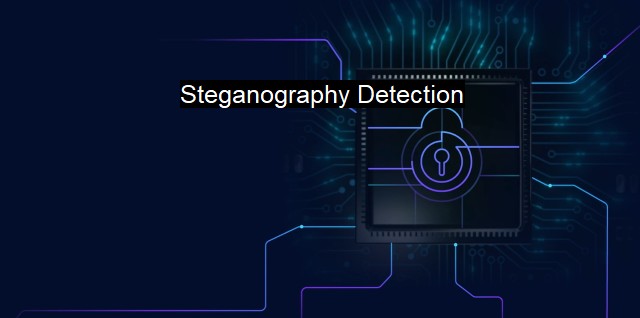What is Steganography Detection?
Steganography Detection in Antivirus Software: Preventing Cyberattacks
Steganography is an art that involves hiding secret information within an ordinary, non-secret, file or message to avoid detection, while the person who receives it, can extract the secret information. For years, organizations, classified agencies, militaries and other specialized groups have employed this covert technique of transmission to secure their confidential information from unauthorized access. With the technological advancements digital steganography has become widely accessible, leading to potentially malicious uses. Widespread internet use has allowed steganography to be used not only for peaceful and legitimate purposes, such as copyright protection, but also for carrying out illegal activities, like terrorism, hacking, cybercrime, and information leakage. Therefore, the significance of steganography detection in cybersecurity and antivirus operations has become paramount.Steganography detection, also known as steganalysis, is a method used in cybersecurity to identify the existence of hidden information within digital data. Unveiling the invisible trails of data alteration on the surface can be challenging since the changes are typically minimal and often unnoticeable. Therefore, specialized software and observational skills are necessary for detecting hidden patterns and anomalies. Multiple techniques have emerged in steganography detection over the years, which primarily involve statistical, structural, and descriptive analysis of the data.
One popular technique is visual attack, where an investigator tries to detect secret information just by looking at the image. this demands an experienced eye and is usually ineffective with sophisticated steganographic methods. In contrast, in a statistical attack, suspicious data is subjected to statistical analysis. A successful statistical analysis can highlight disparities from regular data patterns, leading to the discovery of hidden information. This approach works on the premise that altering data to hide information typically modifies its statistical properties.
Structural and transformation attacks are another type of steganography detection techniques. They focus on losses induced in data scalability and flexibility due to steganography - alterations that sometimes parallel certain unique, recognizable structures within an otherwise unmodified dataset. This results in detecting anomalies that can lead to the discovery of hidden messages.
Steganography detection is critical in antivirus and cybersecurity operations as it plays a crucial part in preventing cyber-attacks and threats. Anti-steganography methods neutralize potential risks posed by this technology. If left undetected, a virus can remain hidden within an innocent-looking image file, opening up opportunities for cybercriminals to exploit the intended user's system to steal sensitive information, subject the user to extortion or manipulate systems for various malicious tasks.
Today's advanced steganography techniques require more sophisticated antivirus approaches for detection. Contemporary antivirus software often integrates a form of steganalysis for an added layer of protection. These solutions actively scan various types of files and network traffic for anything that may have hidden data derived from irregular patterns, statistical anomalies, structural alterations amongst many other strategies. This simultaneous multidimensional detection can curtail illegitimate activities greatly.
Proximity to a digital world heavily reliant on data makes cybersecurity more than a necessity. The technological advancements have made steganography more complex to detect. Hence, cybersecurity tools and involvement of artificial intelligence, together with refined computing methodologies to detect steganography, have become essential. As part of these developments, the reinstallation of trust in the digital framework not only espouses the significance of cybersecurity but also highlights steganography's increased potency as a threat in the realm of information technology.

Steganography Detection FAQs
What is steganography detection?
Steganography detection is the process of identifying and analyzing hidden information or data that has been concealed within digital files using various steganography techniques. It is a critical aspect of cybersecurity and antivirus software, as it helps to identify any malicious or suspicious activity that could cause harm to your system.How does steganography detection work?
Steganography detection works by analyzing digital files and identifying any patterns, anomalies, or hidden data within them. It involves using various algorithms and forensic techniques to detect any malicious code or suspicious activity that could be hidden within these files. Modern steganography techniques are becoming increasingly sophisticated, so it is essential to have state-of-the-art detection software to protect your systems.Why is steganography detection important?
Steganography detection is important because it helps to prevent cybercriminals from hiding their malicious activities and taking over your systems. Cybercriminals often use steganography to hide malicious code and data within seemingly innocent files, such as images and PDFs, which can then be used to launch attacks on your system. With steganography detection, you can identify and neutralize these threats before they cause any harm.What are the benefits of using steganography detection software?
There are several benefits of using steganography detection software, including early detection of malicious activity, improved threat response times, and enhanced system security. By using advanced algorithms and forensic techniques, steganography detection software can quickly identify any signs of suspicious activity and take preventative measures to stop it in its tracks. This can save valuable time and resources and prevent significant damage to your system. Additionally, steganography detection software can help to mitigate the risks associated with data breaches and cyber-attacks, which can result in significant financial and reputational damages.| | A | | | B | | | C | | | D | | | E | | | F | | | G | | | H | | | I | | | J | | | K | | | L | | | M | |
| | N | | | O | | | P | | | Q | | | R | | | S | | | T | | | U | | | V | | | W | | | X | | | Y | | | Z | |
| | 1 | | | 2 | | | 3 | | | 4 | | | 7 | | | 8 | | |||||||